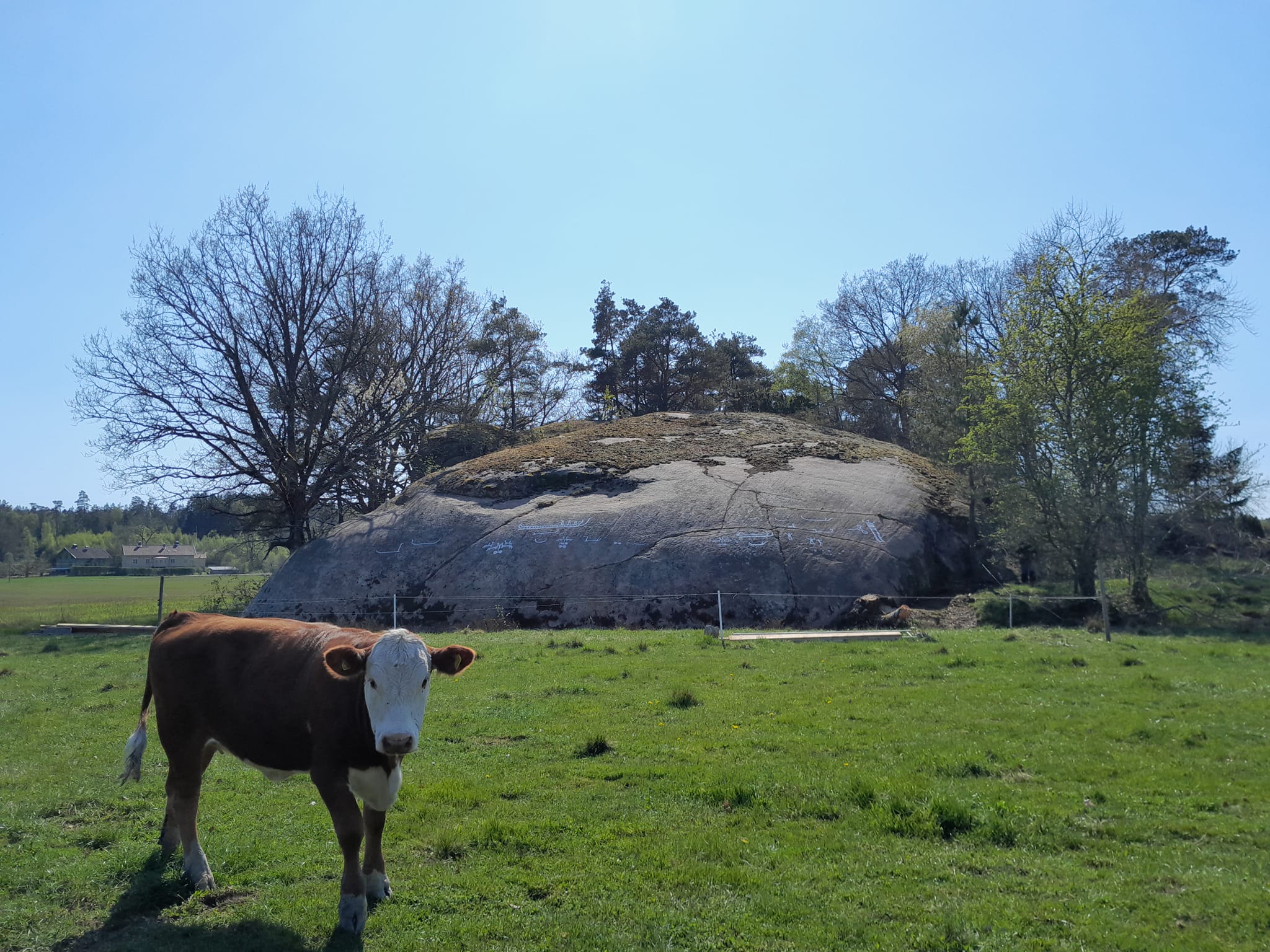Around 40 petroglyphs have been uncovered on a steep rock face in Sweden that’s been covered in moss for thousands of years. Crafted some 2,700 years ago, the Bronze Age rock art depicts several different motifs, including strange human figures, ships, and wild beasts.
The collection of ancient artworks was recently discovered by the Foundation for Documentation of Bohuslän’s Rock Carvings near the town of Kville.
As it stands today, the site is found in the middle of a grassy farm, but sea levels were significantly higher when the petroglyphs were made, meaning this giant rock would have likely been the cliffside of a small island.
“What makes the rock carving completely unique is that it is located 3 meters [10 feet] above today’s ground level on a steep rock surface which, during the Late Bronze Age, was located on a small island,” the Foundation said in a Facebook post announcing the find.
A Swedish cow keeps guard of the newly discovered petroglyphs.
Image courtesy of The Foundation for Documentation of Bohuslän’s Rock Carvings
“The rock carving must have been made from a boat when the sea level was approximately 12 meters [39 feet] above today’s sea level,” it continued.
Kville is found on the western coast of Sweden in a province called Bohuslän, which is well-known for its ancient petroglyphs. In the locality of Tanumshede, there’s a UNESCO-listed site that holds hundreds of examples of ancient rock art depicting people, birds, boats, snakes, and snakes.
“The carvings were executed by pecking and grinding the rock using stone hammers and points. The panels of rock art, skilfully created with simple tools, show a rich diversity of compositions of the highest quality, even when regarded simply as works of art or design. Compared to other similar contexts, these motifs and scenes are even more outstanding in their ability to convey reflections of life and cosmology,” UNESCO says.
It’s possible the artwork depicts some kind of narrative.
Image courtesy of the Foundation for Documentation of Bohuslan’s Rock Carvings
“The Rock Carvings in Tanum represent a unique artistic achievement through their skilful and detailed depictions of animals, humans, ships, weapons, and symbols of the Bronze Age. These sometimes include lively scenes and complex compositions of elaborate motifs from travel, status, power, warfare, and cult,” it continues.
Bar Antarctica, petroglyphs have been found in practically every corner of Earth. Most date to the Neolithic period, around 10,000 years ago, but the art seems to have been lost once human cultures had developed writing systems. Nevertheless, for a significant patch of history, carving figures into rock faces was to go-to means of communication and expression for countless human cultures around the globe.
Source Link: Stunning Petroglyphs In Sweden Have Been Hiding Under Moss For 2,700 Years
